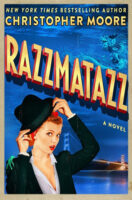
Guest Post by Kevin Brown
June and Athena both attended Yale and majored in writing; they even both began publishing short stories, then a novel for each of them. At that point, though, their careers took decidedly different paths. June’s novel ended up with a small press that folded, while Athena’s novel was the first step in a literary career that led to a deal with Netflix. Unfortunately, on the night when she and June are celebrating that deal, Athena dies.
The bulk of Yellowface proceeds from that point, as June steals a typed manuscript Athena has written and passes it off as her own, even going by her full first and middle name—Juniper Song—to make it less clear that she has no Asian heritage. Kuang’s novel raises questions about cancel culture, social media, the publishing world, and who gets to tell which stories (who controls narratives, in general).
While June is not a likable narrator, Kuang works hard not to stereotype her, especially when talking about June’s experiences in the publishing industry. June is not treated all that well when she’s a no-name novelist, and Kuang doesn’t hold back from criticizing the insularity of the industry.
However, what drives the novel is the sharp-edged satire of June’s belief that she’s entitled to publish this novel and deserves all the celebration that comes with it. Readers should see June’s obliviousness to her privilege; what matters, though, is if they can see their own in her.
Yellowface by R.F. Kuang. William Morrow, May 2023.
Reviewer bio: Kevin Brown has published three books of poetry: Liturgical Calendar: Poems (Wipf and Stock); A Lexicon of Lost Words (winner of the Violet Reed Haas Prize for Poetry, Snake Nation Press); and Exit Lines (Plain View Press). He also has a memoir, Another Way: Finding Faith, Then Finding It Again, and a book of scholarship, They Love to Tell the Stories: Five Contemporary Novelists Take on the Gospels. Twitter @kevinbrownwrite


